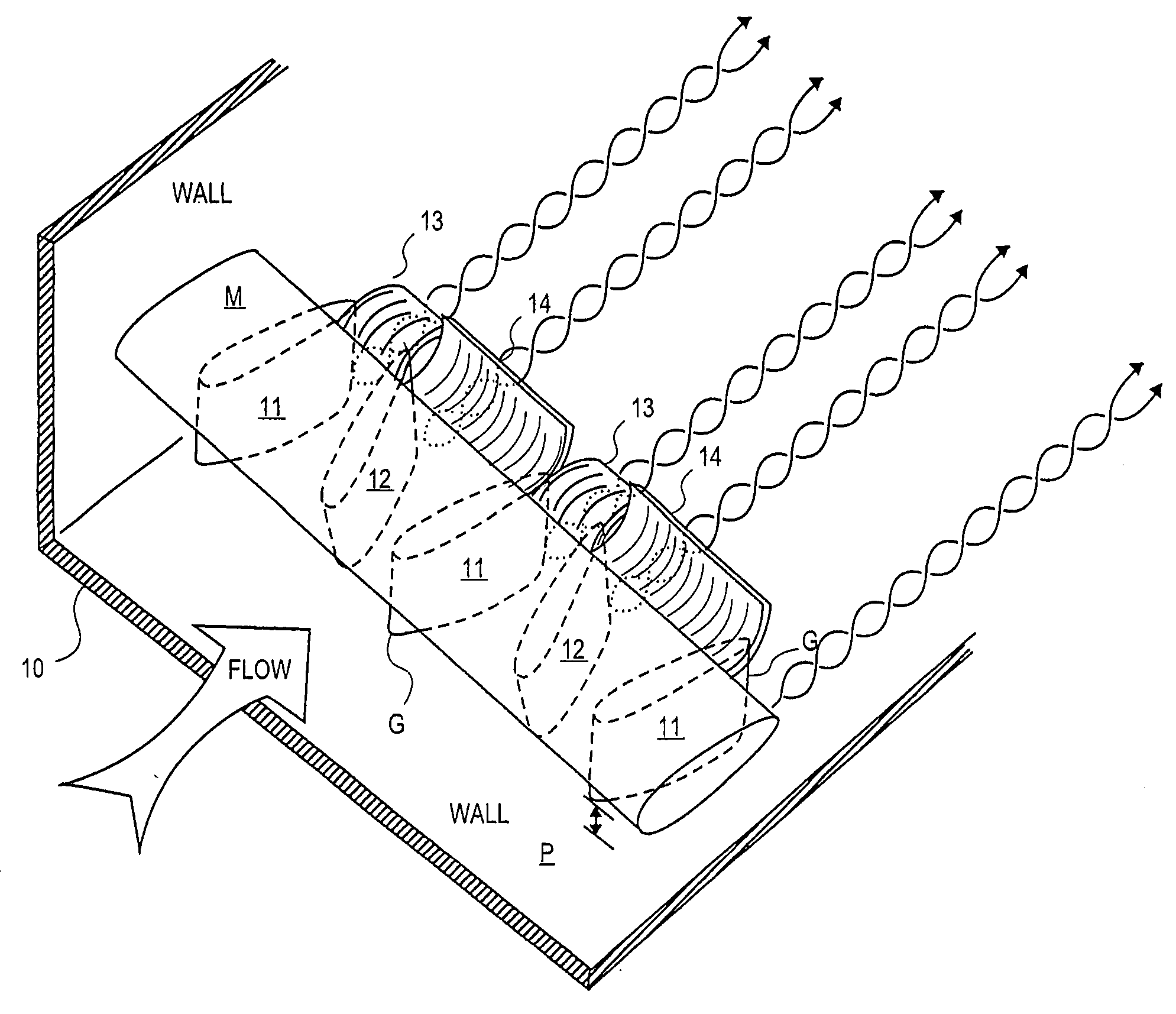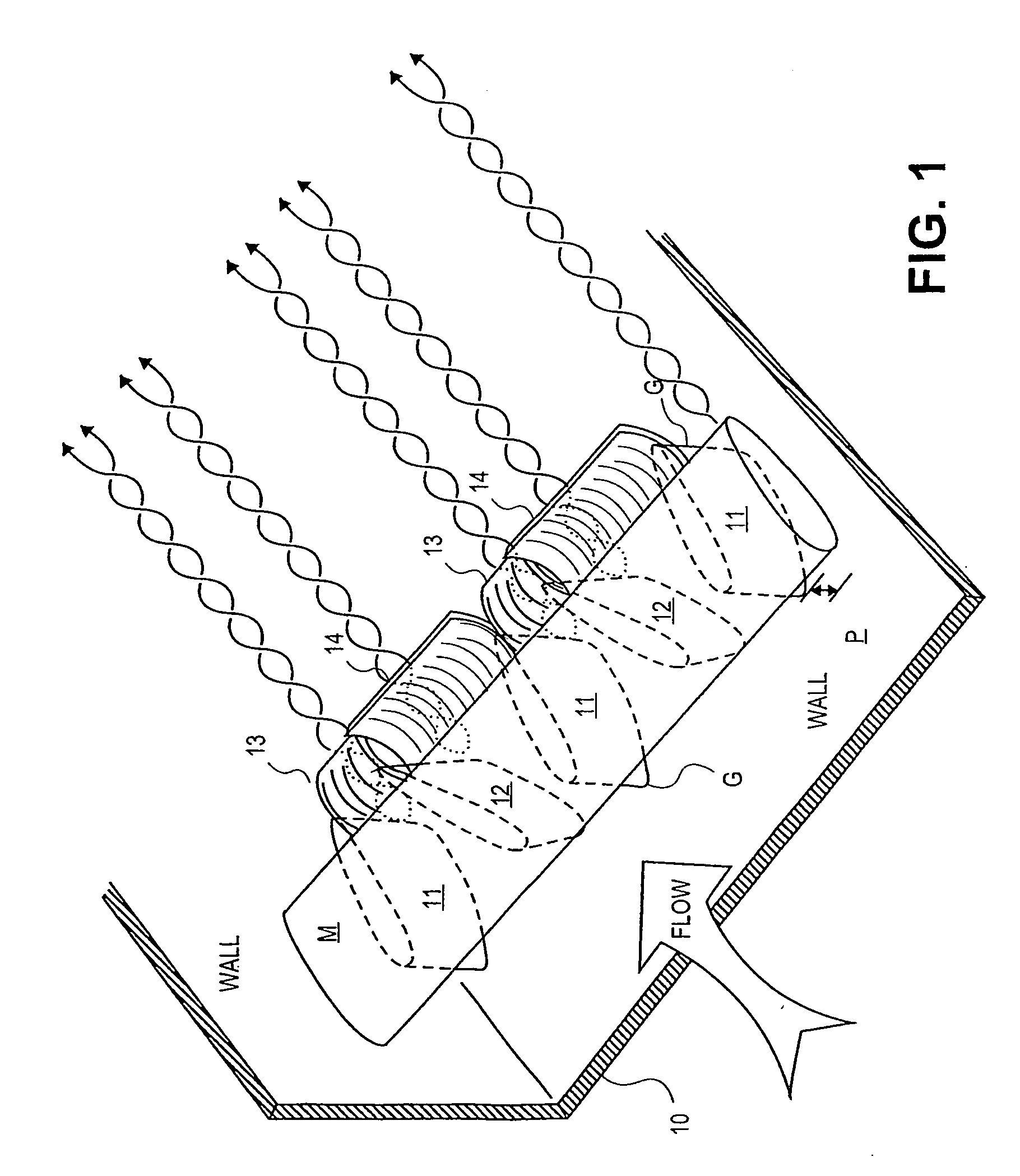Externally Mounted Vortex Generators for Flow Duct Passage
a vortex generator and flow duct technology, applied in the direction of liquid fuel engines, combustion air/fuel air treatment, lighting and heating apparatus, etc., can solve the problems of reducing affecting the efficiency and the direction of the flow control system cannot be properly chosen, so as to reduce the drag a little, and the structural stability is less.
- Summary
- Abstract
- Description
- Claims
- Application Information
AI Technical Summary
Benefits of technology
Problems solved by technology
Method used
Image
Examples
Embodiment Construction
[0081]Referring to FIG. 1, one half of a U-shaped duct 10 constituting the primary aerodynamic surface P is shown. Utilizing this example, the reader will understand that the duct in which the gas flow is confined does not necessarily have to be a closed duct. For example the duct may be a flow diverting duct of U-shape or compressor discharge diffuser placed within the exhaust of a turbo machine.
[0082]A mounting strut M is mounted to one wall of U-shaped duct 10 and is shown extending across U-shaped duct 10. Mounting M is the surface to which vortex generators G are mounted. It is important to understand that mounting M and vortex generators G are in the free stream gas flow. Further, vortex generators G stand from the underside of mounting M and extend to and toward primary aerodynamic surface P. These vortex generators G may never reach the primary aerodynamic surface; instead they may stop short of the primary aerodynamic surface P. In this extension to and toward primary aerod...
PUM
 Login to View More
Login to View More Abstract
Description
Claims
Application Information
 Login to View More
Login to View More - R&D
- Intellectual Property
- Life Sciences
- Materials
- Tech Scout
- Unparalleled Data Quality
- Higher Quality Content
- 60% Fewer Hallucinations
Browse by: Latest US Patents, China's latest patents, Technical Efficacy Thesaurus, Application Domain, Technology Topic, Popular Technical Reports.
© 2025 PatSnap. All rights reserved.Legal|Privacy policy|Modern Slavery Act Transparency Statement|Sitemap|About US| Contact US: help@patsnap.com



